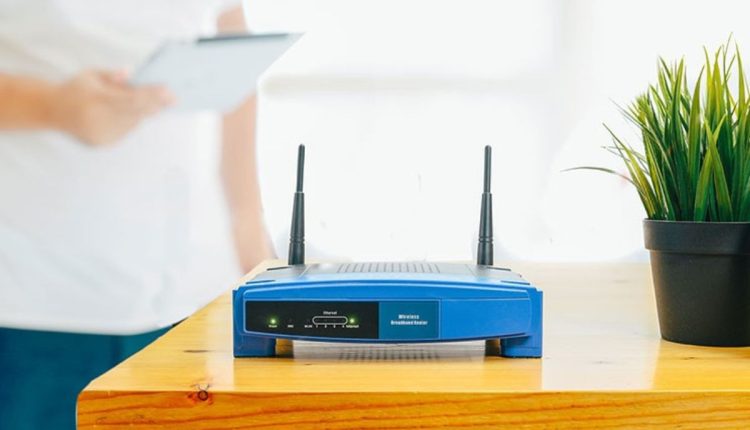How to Secure Your Home Network
In today’s digitally connected world, our homes are filled with various smart devices that rely on a stable and secure network to function effectively. From smartphones to smart TVs and smart appliances, a home network has become the backbone of our daily lives. However, with the increasing number of connected devices, the risk of security breaches has also surged. Securing your home network is not only crucial for protecting your personal data but also for preventing unauthorized access to your connected devices. In this article, we will explore essential steps to secure your home network effectively.
Change Default Router Settings
When you set up a new router, it often comes with default login credentials provided by the manufacturer. Hackers are well aware of these defaults, and leaving them unchanged makes it easy for them to gain access to your network. The first step to securing your home network is changing the default username and password of your router. Select a robust and distinctive combination that is difficult to predict. Additionally, ensure that you use a different password for your Wi-Fi network than the one used to log in to the router’s administrative settings.
Enable Network Encryption
Network encryption is a crucial aspect of securing your home network. Encryption jumbles the data sent between devices and the router, rendering it unreadable to unauthorized users. The most secure encryption method currently available is WPA3 (Wi-Fi Protected Access 3). If your router supports WPA3, enable it immediately. For older routers that do not support WPA3, WPA2 is the next best option. Avoid using outdated encryption methods like WEP (Wired Equivalent Privacy) as they are vulnerable to attacks.
Strong Password Practices
Using strong passwords is one of the simplest yet most effective ways to enhance your home network’s security. Create passwords that are long, complex, and unique for each of your devices and online accounts. Steer clear of common passwords like ‘123456’ or ‘password’ as they are easily guessable. Consider utilizing a password manager to securely store and manage your passwords. It is much safer than writing passwords on paper or using the same password for multiple accounts.
Update Firmware Regularly
“Router manufacturers frequently release firmware updates containing security patches and bug fixes. Keeping your router’s firmware up to date is crucial for maintaining a secure network. Check the manufacturer’s website or the router’s administrative interface for any available updates. Applying these updates will ensure that potential vulnerabilities are addressed, reducing the risk of unauthorized access.
Use Network Segmentation
Network segmentation involves dividing your home network into multiple smaller networks, each with its own security settings. This is particularly useful if you have smart devices such as cameras or thermostats that do not require access to the same network as your computers or smartphones. By separating these devices into different networks, you limit the potential attack surface for hackers. Most modern routers offer guest network features, which can be used to create a separate network for visitors.
Implementing Firewall Protection
A firewall acts as a barrier between your home network and the internet, monitoring incoming and outgoing traffic. It helps block unauthorized access and potential threats from reaching your devices. Routers often come with built-in firewalls, but you need to ensure they are activated. Check your router’s settings and enable the firewall feature to add an extra layer of protection to your network.
Secure Wi-Fi Network Name (SSID)
The name of your Wi-Fi network, known as the Service Set Identifier (SSID), is visible to others in the vicinity. Avoid using any personal information or easily identifiable details in your SSID. A unique and random network name is recommended, as it prevents attackers from targeting your network based on identifiable information.
Conclusion
Securing your home network is essential to protect your personal data and ensure the safety of your connected devices. By following the steps mentioned in this article, you can significantly reduce the risk of unauthorized access and potential security breaches. Remember to change default router settings, enable network encryption, use strong passwords, update firmware regularly, implement network segmentation, enable firewall protection, and choose a secure Wi-Fi network name. Taking these proactive measures will go a long way in safeguarding your home network and providing peace of mind.
FAQs (Frequently Asked Questions)
- Can I change my router’s username and password?
- Yes, you can change the router’s login credentials through the router’s administrative settings. Refer to the user manual or the manufacturer’s website for detailed instructions.
- What is WPA3 encryption, and why is it more secure?
- WPA3 represents the most recent encryption standard for Wi-Fi networks. It provides stronger encryption and better protection against brute-force attacks compared to its predecessors, WPA2 and WEP.
- Is it important to keep my router’s firmware up to date on a regular basis?
- Yes, regular firmware updates are essential to ensure your router has the latest security patches and improvements. Check for updates periodically on the manufacturer’s website.
- Should I use the same password for all my devices?
- No, using the same password for all your devices poses a significant security risk. If one device is compromised, all others with the same password become vulnerable.
- Can I use my home network for sensitive online activities?
- Yes, securing your home network provides a safer environment for sensitive online activities like banking and online shopping. However, always ensure that the websites you visit use HTTPS encryption for an extra layer of security.

